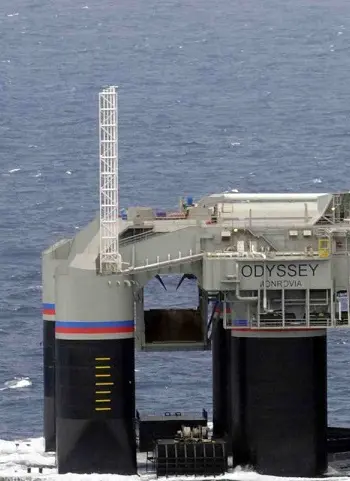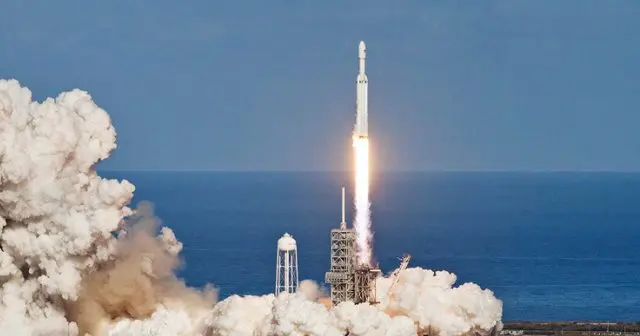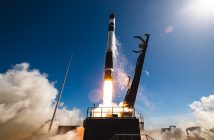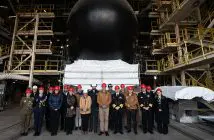
INTRODUCTION
This exploratory paper looks at a key trend – adapting the underlaying Mobile Semisubmersible Platform Vessel, originally constructed for offshore oil-drilling, and converting it into a Sea-Based rocket launching vessel for Super Heavy-Lift Rockets. The current trend has been cut-price purchasing. However, as more countries for national-strategic reasons see a value in this approach competition for the world-wide limited number of suitable rigs will likely become intense. The trend will be influenced by two economic drivers: (1) the small number of semisubmersible offshore oil-drilling rigs that could be repurposed by the Space Industry; and, (2) current hyper-costs for semisubmersible newbuilds, that can range from 460 to 771 million, even passing one billion USD; which could dramatically increase the Space Industry’s infrastructure costs. While primarily focused on the economics underpinning the shift towards re-utilization of offshore oil-drilling rigs by the Space Industry, this paper will also overview a likely shift by countries to equip their defence forces with a new type of Sea Carrier used for Super Heavy-Lift Rockets, and a new type of Orbital Spaceplane Fighter Sea Carrier.
THE MOBILE SEMISUBMERSIBLE PLATFORM VESSEL

Source: The LP Odyssey (Walker, 2007).
ABOVE: Illustrates the standard Mobile Semisubmersible Platform Vessel adapted exclusively for oil-drilling offshore. The underlying vessel long buried under a heavy industry oil-drilling complex is now being utilized by the Space Industry for its Super Heavy-Lift Rocket launches, as these require extensive exclusion zones. The vessel has relatively good motion characteristics in waves, so it does not respond to wave action giving platform stability. Propulsion from propeller pods allow for greater mobility at sea. A number of other support vessels are needed: a control ship, fuel carrier, and rocket transport, as well as fleet protection, and recovery boats. It is anticipated that vessels such as these will be used as a new type of Sea Carrier by countries, creating a new type of strategic force capability.
This exploratory paper is divided into three parts, the first part looks at the key characteristics of a sea-going Mobile Semisubmersible Platform Vessel, that till now has been largely buried under a heavy industry oil-drilling complex. The second part of this paper looks at some of the economic consequences using these vessels as rocket launch platforms. The third part of this paper looks at the broader strategic uses for these types of vessels as the basis for a new type of Sea Carrier.
Characteristics
The Mobile Semisubmersible Platform Vessel, “[was]… originally conceived as a bottom-supported drilling unit” (Rigzone). However, the vessel in its current configuration does not rest on the sea floor like a Jackup oil-drilling rig. Known as ‘column-stabilized’, its working platform is supported high above the sea surface by a set of massive hollow columns. Smaller diagonal columns are used to support the structure. Often referred to as, “semi-submersible catamaran platforms” (Moss). The cylindrical or rectangular columns under the platform connect atop two giant ship-shape horizontal parallel watertight pontoons which contain the main ballasting system.
Basic Operations
The basic operation of the semisubmersible offshore oil-drilling rig is identical for Space and Oil Industry operators. The Mobile Semisubmersible Platform Vessel floats high in the water when it is moved. At a drill site its crew pumps seawater into the pontoons and columns to partially submerge the vessel. With much of its bulk below the water’s surface, the vessel becomes a stable platform for oil-drilling, as it displays wave transparency: moving only slightly with wind and currents (Diamond Offshore Drilling, 2020). Good motion characteristics is achieved by its pontoons (where the main part of its buoyancy is located) underneath the surface. The supporting columns crossing the water surface have relatively small areas. The vessel does not respond to wave action giving overall platform stability.
A Mobile Semisubmersible Platform Vessel can be towed to its location, lifted or it can be a self-propelled type, moving under its own propulsion units reaching a calm water transit speed of 12 knots: 22.22 kilometres (11.9 nautical miles) per hour (New Wave Media, 1981). The vessel can also be equipped with a Dynamic Positioning System, “[which]… uses different motors or propulsion units on the vessel to counteract against the motions of the water.” (Rigzone) An eight or 12 point anchoring (mooring) system is used to lock the vessel in place (Diamond Offshore Drilling, 2020). However, the mooring system can be replaced or supplemented by computer-controlled motor-driven propellers: thrusters, to adjust for the action of winds and waves (Diamond Offshore Drilling, 2020).
Performance When Used for Rocket Launches
Primarily designed to support a towering and heavy industry oil-drilling complex high above wave action, the Mobile Semisubmersible Platform Vessel has characteristics making it largely suitable (even though it was never designed to do this) to work as a platform at sea, for offshore launches of Super Heavy-Lift Rockets. The main performance benefit of the vessel is retaining its stability-buoyancy even when a rocket is launched from it. The force of the launch is expressed as downwards force onto the platform. The platform’s immense strength and its stability transfers this into displacement in the surrounding water. In simple terms the whole vessel is pushed-down into the water, and still remains buoyant. In order to increase stability it appears that the designers of the LP Odyssey have relied on a counterweight principle as well (discussed below).
Vessel Size and Conversion
Three Mobile Semisubmersible Platform Vessels are currently known being used, or intended to be used as Space rocket launch pads, these are the LP (Launch Platform) Odyssey (the former Ocean Ranger II), that was the first to be converted by Sea Launch, in 1997. There are the Ensco8500 (now Deimos), and Ensco8501 (now Phobos), that are in the process of being converted by SpaceX over 2021. For comparison, the U.S. Military’s SBX-1 (Sea-Based X-Band Radar), was put onto a former MossCS50 Mobile Semisubmersible Platform Vessel, around 2006. The four example vessel characteristics are set-out below:

Sources: New Wave Media, 1981; Moss; Vessel Finder; Various.
Currently, the SpaceX Launch Platforms Deimos, and Phobos will be the smaller in terms of displacement than the heavier LP Odyssey, or the SBX-1 (by comparison). Deimos and Phobos, at this stage, appear to have shorter lengths than the LP Odyssey. However, the LP Odyssey actually gained length during its conversion by a massive extension of a multi-story control and shed building that is cantilevered far-ahead in the front of the platform. This increased the vessel’s length from 390 feet: 118.8 meters (its original), to 436 feet: 132.9 meters (see the photograph of the LP Odyssey above).

“Source: The LP Odyssey (Sea Launch, 2016).”
Likely done to increase the safety space (clear deck) between the back end of the control and shed building, and the flame from the rocket launching at the other end. The actual pit-pad used to launch the rocket from, and its under-the-platform flame deflection structure – which on the LP Odyssey appears as a massive duct under the vessel platform (appearing in the photograph on the right). This is set-up at the far-opposite end. It may well be, the cantilevered control and shed building at the other end of the platform, acts as a counter-weight during launches, counteracting the considerable downwards force. Further, as a general rule, only having a small water-plane area (the area filled by the support columns as these cross the water plane) the vessel is sensitive to load changes, and therefore needs its onboard mass trimmed to maintain stability. This is achieved through ballasting adjustments.
ECONOMIC ISSUES
Only a limited number of actual semisubmersible rigs are available for reuse by the Space Industry based on current estimates. For instance, the worldwide offshore oil-drilling rig count and utilization rate in 2020,
“[identified that the]… total number of Jackups, Semisubmersible, and Drillships under contract grew by five units from 473 in December to 478 rigs through January.” (Smith, 2020)
More recent reporting suggests that utilization rates are down from a year ago (in 2019), and the count is likely bottoming as part of an industry trend (Evercore, 2020). Oil Industry figures tend to collapse three categories of rigs – Jackups, Semisubmersibles, and Drillships, into the same category of ‘floaters’ (Diamond Offshore Drilling, 2020). It is not apparent how many of these platforms are actual semisubmersible vessels of the type, with the correct characteristics, to turn these into suitable Sea-Based launching facilities. However, it is guess-estimated that only a few hundred may in fact currently exist.
It should be noted that in the case of the three vessels currently known to be used, or in the process of conversion these were all surplus. The Ocean Ranger II was launched around 1982, and after an industrial accident was left as a hulk for several years at the Dundee docks, Scotland. It was converted in 1997 into the LP Odyssey. The two semisubmersible vessels taken up by SpaceX around 2020, were the Ensco8500 and Ensco8501 (Sensiba, 2021). Both rigs date to around 2008, and were part of a series build before joining the Valaris fleet. By 2020 both rigs had been sitting in port unused, and were apparently due for scrapping.
Conversion from a platform for an oil-drilling rig into a rocket platform basically involves the vessel part, and its systems – mooring system, ballast control, piloting, propulsion and power being retained; and the oil-drilling facility and its systems removed. The next part of the conversion is construction of the launch tower, the control centre, shed and the pit-pad for the launch pad, which has a flame deflection structure – which on the LP Odyssey appears as a massive duct under the vessel platform (discussed earlier). The cost difference, using a converted vessel is substantial. For instance, the Ocean Ranger II (that became the LP Odyssey), was 110 million USD to build in 1983 (American Oil, 2020), and the Ensco8500 series total project cost was approximately 427 million USD (ENSCO, 2007). In the case of the purchase of the ENSCO vessels by SpaceX, this is understood to have been around 3.5 million USD each (Sheetz, 2021). The apparent costs savings compared to the purchase of a new vessel, are likely to offset the costs of conversion. However, these can still be high, the original conversion costs of the LP Odyssey are not known, while a recent report indicates that the current budget for the vessel’s restoration is around 470 million USD (TASS, 2020).
Economic Effect-Prediction for Space Industry Infrastructure Costs
An economic effect-prediction is the potential for Space Industry infrastructure costs to increase due to its need for new Sea-Based rocket launching facilities. Currently, the Space Industry is benefiting from cheap available semisubmersible offshore oil-drilling rigs. However, the Oil Industry is likely to see greater value in these surplus vessels. Rather than sell for scrapping-value only prices to the Space Industry, these are revalued higher as the underlying vessels have a higher value. It can be argued that buying and re-using (re-purposing) the existing vessels introduces massive savings, compared to the cost commissioning a Heavy Industry Shipyard today to build a brand new vessel as an offshore rocket launching facility.
In terms of today’s costs, a 2012 study identified the oil-drilling equipment package alone is around 20 to 30% (around 100 to 200 million USD) of the total project value of constructing a vessel (Kaiser, 2012). It is suspected that if a new-built vessel was constructed specifically as a rocket launching facility, its equivalent equipment package may take-up a similar stake in the whole budget. It is also the case that current hyper-costs for semisubmersible newbuilds for the Oil Industry range from 460 to 771 million USD (Kaiser, 2012). These costs are also known to be far higher; for instance, the Bollsta (West) Dolphin built in 2019, a harsh-environment semisubmersible offshore oil-drilling rig, cost 1.064 billion USD (Offshore Staff, 2012; Infield Rigs, 2021).
Future demand for Sea-Based rocket launching vessels will likely have two long-term economic implications:
(1) It will drive-up demand and prices for second-hand semisubmersible offshore oil-drilling rigs. However, as these are limited in supply (as not all of these will be reusable) this market will likely shut-down very quickly.
(2) A new market for Mobile Semisubmersible Platform Vessels will likely come into being. However, in the race to pioneer Space, these costs will be extremely high.
The main policy option-driver for countries seeking-out Sea-Based rocket launching vessels is that these give greater geostrategic flexibility in terms of moving and positioning for best advantage, in particular moving to launch along the Earth’s equatorial region. Many countries will need this capability, as they either do not have access to Land-Based Space Port facilities, and it is suspected that many of the well-known Space Ports will start to suffer from congestion problems as Space traffic begins to expand exponentially. The other great limitation on the known Land-Based facilities is that their operations can get hampered by poor weather conditions, whereas a mobile Sea-Based facility, has the option to re-locate if conditions are not optimal.
Another reason why the demand for Sea-Based facilities will be high is that rockets are now becoming so powerful, and will continue to grow in size and scale in order to change the fundamental economic drawback of Space launches, namely the need to ‘turn launch cost-per-pound (kilogram)’ into ‘launch cost-per-ton’, in order to achieve true economies of scale. The new Super Heavy-Lift Rockets will require ever-larger exclusion zones in order to safely launch, and that only leaves a Sea-Based option open.
FUTURE STRATEGIC ISSUES: NEW SEA CARRIERS
The final part of this exploratory paper will overview a likely shift by countries to equip their defence forces with a new type of Sea Carrier force based on the Mobile Semisubmersible Platform Vessel needed to launch a Super Heavy-Lift Rocket. The move by countries’ military forces to secure a Mobile Semisubmersible Platform Vessel strategic capability has likely already begun. The recent Russian announcement as to the renewal of the LP Odyssey was made by the Deputy Prime Minister Yuri Borisov on the sidelines of the Army-2020 Forum (TASS, 2020). While, its renewal is not linked to any military purpose; it is nevertheless likely to be in any countries’ national-strategic interests to have a Sea-Based Super Heavy-Lift Rocket launch capability. For instance, from a Chinese perspective,
“This breakthrough in sea launch technology will enable China to launch medium and large satellites and constellations ‘both on land and sea’, especially into low-inclination Low-Earth Orbits (LEOs), and it allows China to remain competitive in the fast-paced Space Industry.” (Song, 2020)
Increasing dependence by countries on their Space Infrastructure, will likely see a greater military need to use Super Heavy-Lift Rockets to get satellites and equipment into Space as quickly as possible. The vulnerability of Land-Based facilities to attack, will by necessity lead to commissioning new types of Sea Carrier forces, that will in effect become a new type of strategic force capability. Use of one Mobile Semisubmersible Platform Vessel, possibly more for strategic redundancy, will likely be needed by any country. Such as for use receiving re-landing rocket boosters, in order to achieve greater turn-around, ensuring continuing operation, if one of the carriers is destroyed by any attack or launch accident. It is anticipated that vessels such as these will be used as a new type of Sea Carrier by countries.
Orbital Spaceplane Fighter Sea Carrier
The need to operate in Space, protect Space-Based Infrastructure, and attack enemy systems can envisage a novel type of Orbital Spaceplane Fighter Sea Carrier designed for launching and recovering craft, along with other conventional aircraft in support. This speculation is based on possible technology convergence of two current technologies. Developments in increasingly shorter – more compact, with more efficient powerful engines, on returnable first-stage booster rockets, that can launch a vehicle into Low-Earth Orbits (LEOs). Mated with developments in single, and small crewed, or robotic Orbital Spaceplanes (similar to contemporary craft like the Dream Chaser and Boeing X-37); could see some type of future combat in Space scenario, such as might have been envisaged for the mid-1970s Soviet MIG-105.
It is not inconceivable that a current super aircraft carrier could be modified with a side row of rocket launch pit-pads, with flame redirection ducts, as currently seen on the LP Odyssey. The runway deck designed to recover incoming Orbital Spaceplane Fighters, with landing pads for returning rocket boosters, cranes, and movable launch towers. Some of the major technical challenges may be how to massively shorten run-way requirements for a returning Spaceplane. For instance,
“The Dream Chaser does not use any hazardous materials for operation; therefore, the Dream Chaser can land at any suitable runway (8,000 feet: 2,400 meters long) around the world without requiring specialized equipment.” (Taylor, 2014)
A current in-service super aircraft carrier has a massively shorter runway deck, that is generally under 1,092 feet: 332.85 meters in available length. To land, an aircraft is assisted by its tailhook snagging an arresting wire. Other technical challenges landing a returning Spaceplane may be the requirement to slow its speed on landing; famously the Space Shuttle Orbiter used its drag parachute for this purpose (NASA, 2006).
CONCLUSION
It is anticipated, there will be development iterations of the Sea Carriers overtime: Mobile Semisubmersible Platform Vessels, and perhaps for an Orbital Spaceplane Fighter Sea Carrier, before an optimal design comes out of the marine engineering side of the equation as what is the best design and build, for a fully bespoke version for Sea-Based Space rocket launching. Whereas the notion of an Orbital Spaceplane Fighter Sea Carrier is pure speculation, the strategic shift globally is however occurring with the move by several countries towards developing and acquiring the capability for Sea-Based launch facilities. The model followed, will be based upon the Mobile Semisubmersible Platform Vessels being first repurposed from their use in the Oil Industry, to new purposes in the Space Industry. What will follow, will be an identical shift (as occurred in the Oil Industry since the 1960s) towards launching even bigger and more expensive vessels specifically built by shipyards adapted exclusively for Space rocket launching offshore. The expressed national-strategic goal will be to give greater geostrategic flexibility in terms of moving and positioning for best advantage, in particular moving to launch Space rockets along the Earth’s equatorial region, or wherever on the Earth’s surface – as 71% of the planet is covered by the seas. This will shift dramatically the geopolitical control of Space, as countries will no longer be fixed to specific Land-Based facilities.
REFERENCES
- American Oil and Gas Society Editors. 2020 [-2016]. Offshore Rocket Launcher. Webpage (2 January 2015; 5 October 2020).
- Diamond Offshore Drilling. 2020 Offshore Rig Basics. Diamond Offshore Drilling Incorporated Website.
- 2007 ENSCO to Build New Ultra Deepwater Semisub. Rigzone Website (7 June).
- 2020 Offshore Rig Count Likely Bottoming, Says Report. Offshore Magazine Website (24 December).
- Infield Rigs. 2021 Offshore Data Portfolio. Infield Systems.
- Kaiser, M.J. Snyder, B.F. 2012 Reviewing Rig Construction Cost Factors. Offshore Magazine Website (1 July).
- Moss Maritime Webpage.
- 2006 Landing the Space Shuttle Orbiter. NASA Facts.
- New Wave Media. 1981 Construction Begins on New Super-Class Semisubmersible for ODECO. Maritime Reporter.
- Offshore Staff. 2012 Dolphin Newbuild Semisubmersible Gets Contract. Offshore Magazine Website (29 October).
- 2021 How Do Semisubmersibles Work? Rigzone Website.
- Sea Launch. 2016 Photograph of the LP Odyssey.
- Sensiba, J. 2021 More About SpaceX’s Oil Rigs. Clean Technica (21 January).
- Sheetz, M. 2021 SpaceX Bought Two Former Valaris Oil Rigs to Build Floating Launch Pads for its Starship Rocket. CNBC Website (19 January).
- Smith, J. 2020 Worldwide Offshore Rig Count and Utilization Rate. Offshore Magazine Website (1 November).
- Song, Z. Xie, Z. Qiu, L. Xiang, D. Li, J. 2020 Prospects of Sea Launches for Chinese Cryogenic Liquid-Fueled Medium-Lift Launch Vehicles. Chinese Journal of Aeronautics
- Taylor, F.W. Allison, C.J. Lee, C.L. 2014 Challenges and Opportunities Related to Landing the Dream Chaser Reusable Space Vehicle at a Public-Use Airport. Space Traffic Management Conference. Sierra Nevada Corporation.
- TASS [Russian News Agency]. 2020 Sea Launch to be Restored at Cost of About $470 Million. Space Watch Global Website.
- Walker, K. 2007 Photograph of the LP Odyssey.
AUTHOR
Chris Flaherty authored the Terrorism Research Center’s report – Dangerous Minds (2012). He was the co-primary author, along with Robert J. Bunker of the book – Body Cavity Bombers: The New Martyrs (iUniverse, 2013). Two essays of his, from 2003 and 2010 were reprinted in the Terrorism Research Center’s book – Fifth Dimensional Operations (iUniverse, 2014). He recently contributed a book chapter – The Role of CCTV in Terrorist TTPs, edited by Dave Dilegge, Robert J. Bunker, John P. Sullivan, and Alma Keshavarz, the book – Blood and Concrete: 21st Century Conflict in Urban Centers and Megacities, a Small Wars Journal anthology, published on behalf of the Small Wars Foundation with Xlibris (2019).
Dr Chris Flaherty https://au.linkedin.com/in/drchrisflaherty





